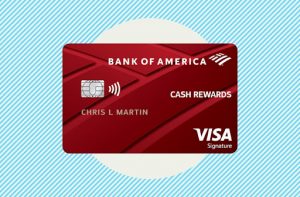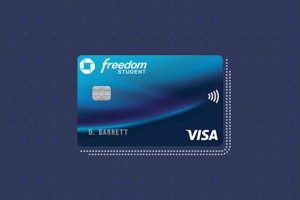Few students are most likely to have established a credit history sufficient to qualify for a general-purpose credit card. Student credit cards, on the other hand, enable students to accomplish exactly that by providing an available card today of credit record and reduced income restrictions. We researched credit cards extensively in determining the most effective cards for colleges. The greatest student credit cards are simply issued based on a student’s salary and creditworthiness. They also include modest yearly fees and some sort of rewards program that students may utilize for vacation or cash back. Let’s follow us to discover student credit card.
If you’re new to credit, here are the best student credit cards to discover — but if you already have a strong credit rating and a credit history, you might also want to check out our recommendations for the best money credit cards and top no-annual-fee credit cards.
Contents
1. What Exactly Are Student Credit Cards?
Credit cards for Students are simply starter cards designed for students attending authorized four-year institutions or universities. Student cards often have cheaper interest and fee rates as compared to other cards targeted at first-time card holders. Furthermore, incentives are frequently offered, although very few generic beginning cards do. Card companies give these discounts to people who are new to money management, in other words, they want individuals as potentially profitable long-term consumers.
Those with college educations earn money and have higher credit than those without. Card companies are also aware that customers frequently maintain their initial credit card (or, at the very least, the first credit card provider) for an extended period of time. These variables add up to a tremendous lifetime value again for the card business, motivating them to provide student consumers a considerably better price than they do to those that lack a credit record and established income.
2. 4 Best Credit Cards For Students
2.1. Bank of America Customized Cash Rewards Credit Card

This Card for College has one of the highest introductory incentives of any college credit card. New cardholders may receive a $200 cash rewards incentive after making $1,000 in purchases during the first 90 days of account creation, much like their grown-up counterpart.
The opportunity to choose the area in which you receive the most points is another appealing feature of the card. Each quarter, you may choose to receive 3% back on petrol, online shopping, restaurants, travel, pharmacies, or home renovation down to $2,500 in expenditure (mixed with the 2% areas of grocery and wholesaler clubs, then 1%), and you can modify your 3% category decision once per month.
For the first 15 billing cycles, new cards enjoy a 0% introductory APR on transactions and debt transfers (then a 13.99 percent – 23.99 percent Variable APR). That’s useful if you have a lot of front purchases to pay it off time, such as dorm décor or books — but be certain you have a strategy and the resources to repay before the introductory 0% APR period ends.
2.2. Bank of America® Travel Rewards Credit Card
Students who like traveling, particularly abroad, might consider the Travel Card for Students. It comes with a welcome incentive of 25,000 online extra points after paying $1,000 in purchases in the first 90 days after account creation (redeemed as a $250 statement credit against travel and dining expenditures), the same as the non-student counterpart (Bank of America® Travel Rewards credit card). When you redeem for account credits against travel expenses including flights, hotels, rental cars, campers, and even select tourist activities, each point is worth one penny.
This is a fantastic card if you would not want to deal with elaborate award ladders or blackout periods, and its earning system is straightforward – 1.5 points for each dollar spent, with no subcategories to remember. You’ll get a 0% initial APR on purchases and debt transactions for 15 business days (after a 14.24 percent – 24.24 percent Variable APR) and no international transaction fees when using the card overseas.
2.3. Chase Freedom Student credit card
The original, legendary Chase Freedom® card is no longer accessible to new applicants, but its younger brother, the Chase Freedom® Student credit card, is still available. New cards can get a $50 bonus after making their first purchase within the first three months of account opening, as well as 1% cashback offers (1 point for a dollar) on all transactions.

You’ll get a $20 incentive (2,000 points) for each year your bank is in good academic standing, and you can win a credit limit boost after making five on-time monthly payments within 10 months of account activation.
For a no-annual-fee student card, the Chase Freedom® Student credit card offers unexpectedly outstanding advantages. When you use your card to make a qualifying purchase, you’ll receive a one-year warranty extension on the manufacturer’s guarantees of 3 years or less, as well as coverage from damage or theft on new products for up to 12 months (up to $500 per complaint and $50,000 per account).
When you pay with the card, you also get trip disruption or cancellation coverage worth up to $1,500 per passenger and $6,000 per journey for pre-paid, non-refundable trips (for example, if you become sick and have to cancel or curtail your vacation, or if it’s canceled due to bad weather).
2.4. Deserve EDU Mastercard for Students
The Deserve EDU Credit Card for Learners does not provide exceptional rewards earned, but it is unusual in that it does not require an Ss Number to apply. This makes it a fantastic choice for overseas students who would not otherwise be eligible for a credit card issued in the United States. After purchasing $500 in the first three calendar months on the card, new users can get a free one-year Amazon Prime Student membership ($59 value).

The card gets 1% cash back on all transactions, but it also includes a number of essential perks, such as mobile phone insurance when you pay your bill with the card – you’ll be insured for theft or damage up to $600 with a $50 deposit, up to $1,000 per year. In addition, the Deserve® EDU Credit card for Students comes with rental vehicle insurance and no international transaction fees.
Conclusion:
A credit card, like any other instrument, may become troublesome if not handled correctly. And students have a limited credit history to rely on cards responsibly. However, for the majority of students, the advantages of using a credit card exceed the disadvantages. For starters, there is the ease of continued credit. Building a strong credit history throughout one’s college years can also give a student a significant advantage when it comes to applying for other forms of credit after graduation. Future credit demands will undoubtedly involve vehicle loans and mortgages, but potential landlords and jobs will also review credit scores.




